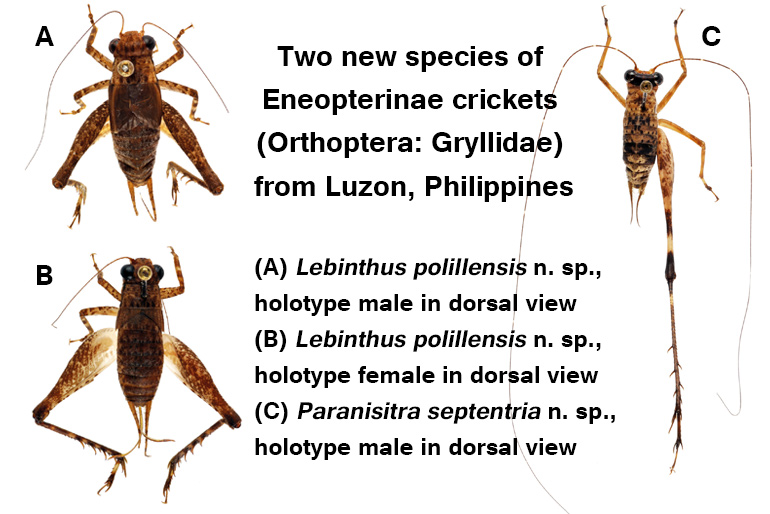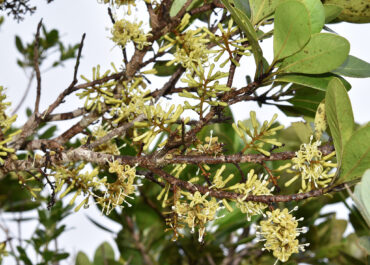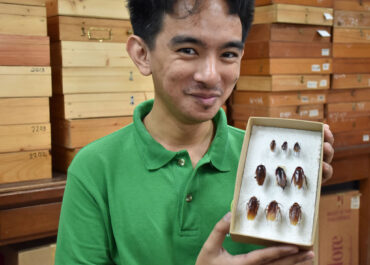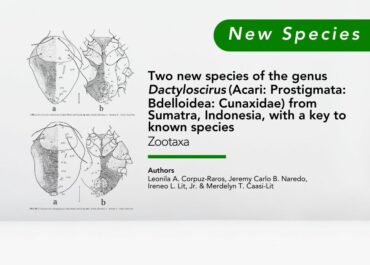Two new cricket species from Luzon, Philippines described

Two new species of eneopterine crickets (Orthoptera: Gryllidae: Eneopterinae) have been recently described by Jessica B. Baroga, Dr. Sheryl A. Yap and Dr. Tony Robillard in an article published in the journal Zootaxa.
Ms. Barroga is currently an MS student at the University of the Philippines Los Baños Crop Protection Cluster while Dr. Yap is the curator of weevils and derbids at the UPLB Museum of Natural History Entomological Collection. On the other hand, Dr. Robillard is associate professor at the Paris-based Institut de Systématique, Évolution, Biodiversité, Muséum national d’Histoire naturelle and a collaborator of the UPLB Museum of Natural History.
Eneopterinae is a subfamily of usually brown or gray crickets typically found in moist tropical countries such as the Philippines. Although found in forests, these crickets can also be found in gardens and parks. According to Dr. Yap, the crickets’ main diet are decaying plant materials. “That is why it is important to study them because they help in nutrient cycling in areas such as forest floors,” she added.
“During our surveys in several localities in Luzon, we captured interesting crickets which we later found out as new species,” Baroga said. The researchers named the first species as Lebinthus polillensis and the second, Paranisitra septentria.
Named after its type locality, Polillo island, L. Polillensis is a small, winged, brown cricket with “dark and light patterns” in the body and can be differentiated from other Eneopterinae by the structure of its genitalia or reproductive organs.
The other species, P. septentria, is a typically small, yellow-brown wingless eneopterine species, very unique for the absence of a transverse yellow band in its face which is present in other species of Paranisitra. “We named the species septentria from the Latin word ‘septentrionarius’ which means ‘northern’ since the species is the first in Northern Luzon”, the authors said.
These crickets show a unique diversity of communication signals, ranging from muteness (as in Paranisitra) to the use of ultrasonic signals that humans cannot hear. They are very interesting to understand how the environment has shaped and continually shaping biodiversity. For more technical information on the two new species, check out the journal article at http://dx.doi.org/10.11646/zootaxa.4139.1.5
Search
Archives
Categories
- Announcement (21)
- Feature (21)
- News (141)
- Press Release (55)
- Research (4)
- Services (3)



